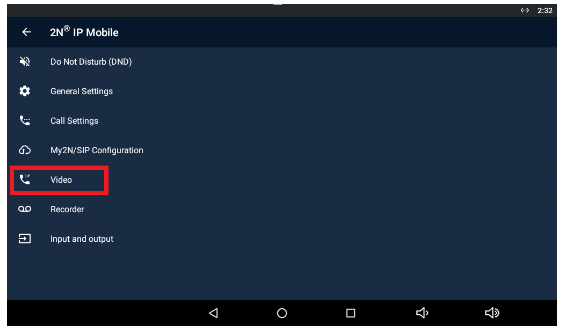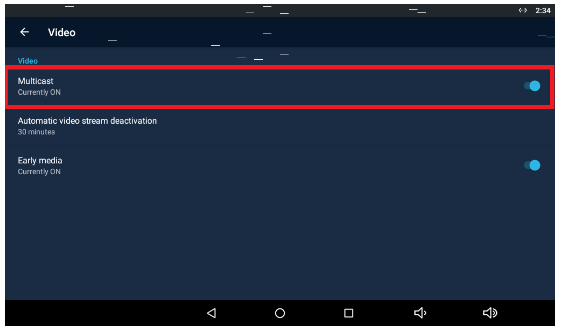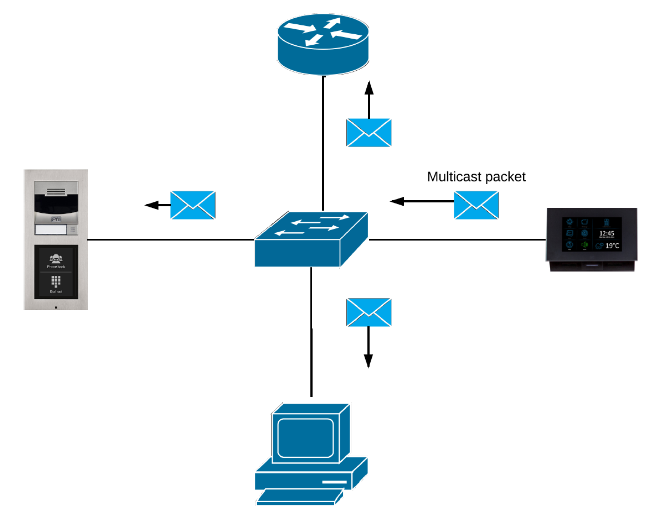Multicast Discovery 2N® Indoor Touch 2.0 - What is this function for?
By default, the 2N® Indoor Touch 2.0 is using multicast communication to be able to set up the connection towards the 2N IP intercoms. The multicast communication allows the device to reach any other device within the LAN network because L2 devices (switch) send the packet with the multicast destination IP address to all the interfaces. feature can be found in the 2N® Intercoms application in the section Settings->Video.
Figure 1
Multicast discovery enabled
By default the multicast discovery is enabled on the 2N® Indoor Touch 2.0. Info packet is sent towards the specific multicast address and reach all 2N IP intercoms within the LAN network. Info packets are used for pairing procedure between 2N® Indoor Touch 2.0 unit and intercoms. Intercoms are sending multicast messages as well. These messages are being sent periodically and contains various types of information used for the proper function of the devices.
Figure 2
To be able to fully benefit from this feature it is recommended to enable IGMP snooping on all switches within the LAN. The reason is that the switch is controlling the IGMP messages which are exchanged between the user's device and the router. IGMP messages are used for the establishment of the multicast membership between the router and the source device. The switch is controlling these messages because the multicast is sent towards all the interfaces and if there is a video stream send which will be using significant amount of the bandwidth, the switch would flooded all the interfaces with this traffic, which could cause the reduction of the overall performance of the network. With the IGMP snooping the switch is sending the multicast traffic only towards interfaces from which the IGMP group membership report message has been sent.
Multicast discovery disabled
In this mode, 2N® Indoor Touch 2.0 sends info packets in unicast always to the IP address of the 2N IP intercom observed and periodically to all the 2N IP intercoms in the LAN device list. In the unicast mode, info packets are only sent to the 2N IP intercoms; no other 2N® Indoor Touch 2.0 devices in the LAN are sent any info packets. This mode is beneficial in case that your switch does not support multicast or switching the multicast in wrong way.
Examples:
- Switch does not support IGMP snooping - as a result the network can be flooded by the multicast packets which contains video preview from the intercom and cause the significant reduction of the bandwidth.
- 2N® Indoor Touch is connected to the wifi - wifi router can block the multicast traffic becuase the TTL filed is equals to 1 which means that the packet cannot be sent further into the network and also some wifi devices has troubles to handle the multicast.
Figure 3




